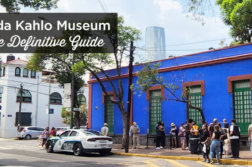The Best Cheap and Free Things to Do in Mexico City
You’re planning to visit Mexico City and you’re looking for epic activities to do without breaking the bank?
You’re at the right place!
I’ve lived in this exciting city for six years. I know that things can get expensive, so I started searching for budget-friendly activities to enjoy.
My journey revealed countless free activities throughout the city, from historical buildings and museums to modern art, mainly in the historic center, but also in Chapultepec Park, Roma Norte, and other areas.
In this guide of the best free things to do in Mexico City, I will help you save money in the Mexican capital.
- Looking for more tips for a budget trip? You should also read other article: How to visit Mexico City on a budget?
Let’s get started!
Sommaire
- The Best Cheap and Free Things to Do in Mexico City
- 40 Free Attractions and Activities in Mexico City
- Historic Center
- 1. Palacio de Iturbide
- 2. Estanquillo Museum
- 3. La Casa de los Azulejos
- 4. Take the best picture of the Palace of Fine Arts
- 5. Academia de San Carlos
- 6. Enjoy free events
- 7. Museo nacional de las culturas del Mundo
- 8. Museum of the Ministry of Finance and Public Credit (SHCP)
- 9. Cultural Center of Spain
- 10. Museum of the Photographic Archive (MAF)
- 11. Mexican Army and Air Force Museum
- 11. Secretaria de Educacion Publica
- 13. Palacio Nacional
- 14. Postal Palace
- 15. Museo de la Charreria
- 16. Museo de la Cancillería
- 17. Biblioteca Miguel Lerdo de Tejada
- 18. Centro de la Imagen
- 19. Museum of Medicine
- 20. Telegraph Museum
- 21. Palacio de la Autonomía
- 22. Museo Banco de Mexico
- 23. Ex Teresa Arte Actual
- 24. Foro Valparaiso
- 25. National Numismatic Museum of Mexico
- 26. Museo de los Cabildos
- Roma Norte
- Bosque Chapultepec
- Other districts
- Map of Top Free Attractions in Mexico City
- Staying in Mexico City
- Get the Best Deals on Flight Tickets
- You’re traveling in Mexico? These articles will help you!
40 Free Attractions and Activities in Mexico City
To make it easier for you to explore, I’ve categorized my 40 best free activities in Mexico City by districts: the Historic Center, Roma Norte, Bosque de Chapultepec, and an ‘Other’ section for other various districts.
Historic Center
1. Palacio de Iturbide
Whenever I’m exploring Mexico City’s Historic Center, stopping by Palacio Iturbide (Palacio de Cultura Citibanamex) is always on my agenda, which is why it’s the ideal starting point for this guide!
Situated on the lively Av Francisco I. Madero, this breathtaking piece of Mexican Baroque architecture, crafted by Francisco Guerrero y Torres between 1779 and 1785, holds a special place in my heart.
The fact that you can step into this magnificent building for free always amazes me. With its two floors offering a variety of temporary exhibitions and a permanent one detailing Palacio Iturbide’s history, every visit offers something different and intriguing.
- Av Francisco I. Madero 17, Centro Histórico de la Cdad. de México
- Open everyday 10am-7pm



2. Estanquillo Museum
The Estanquillo Museum is located in the heart of Mexico City’s Historic Center, on the pedestrian street of Madero.
This museum proudly displays the extensive personal collection of writer Carlos Monsiváis, including over 12,000 items that range from paintings and photographs to toys and advertisements, all capturing the essence of Mexican life and folk art.
The museum is housed in the historic La Esmeralda building, a space that has evolved from a 19th-century jewelry store to its current cultural role.
One of my favorite features is the rooftop access, offering an incredible view of the city that never fails to amaze me. Plus, there’s a café up there – perfect for a break, though you’re welcome to simply soak in the views without buying anything.
- Wednesday to Monday 10am-6pm
- Isabel La Católica 26, Mexico City

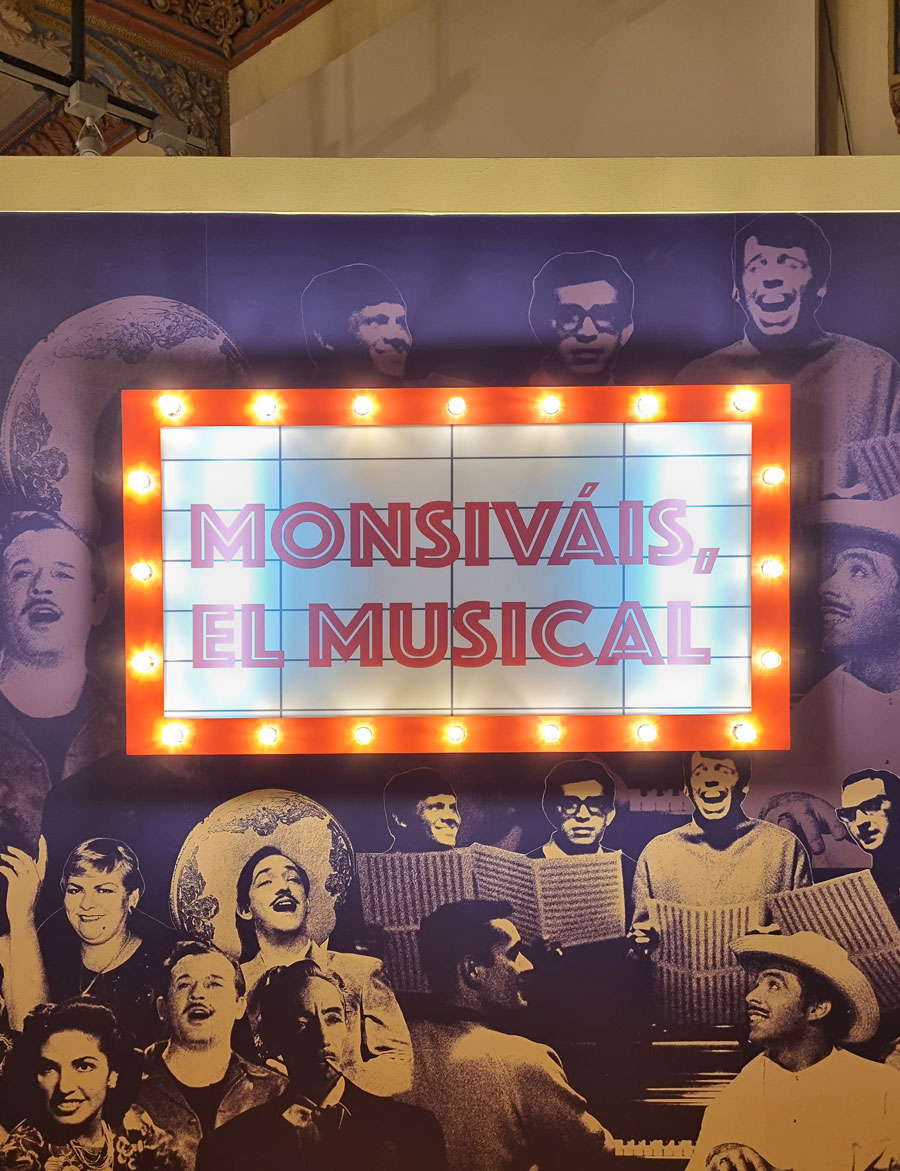

3. La Casa de los Azulejos
Casa de los Azulejos (House of Tiles), also known as the Casa del Conde del Valle de Orizaba, is an iconic and easily recognizable building with its façade adorned with handcrafted Talavera tiles from Puebla.
Feel free to explore Casa de los Azulejos, even if you don’t plan to eat at the Sanborns restaurant inside.
When you step inside, you’ll be greeted by a magnificent main patio featuring upper corridors supported by elegant columns and a beautiful Baroque fountain.
Visit the second floor for a unique view and enjoy the mural ‘Omnisciencia’ (1925) by the renowned artist José Clemente Orozco on the staircase wall as you ascend.
If you’re in search of more flavorful Mexican cuisine within a historical setting, I’d suggest exploring Cafe de Tacuba.
This restaurant, founded in 1912 within a charming 17th-century mansion, is renowned as one of the most traditional gastronomic destinations in the Historic Center.


4. Take the best picture of the Palace of Fine Arts
It’s said that to get the best view of the Palacio de Bellas Artes, you should go up to the 8th floor of the Sears tower right across from it and head to the Don Porfirio café.
Well, I disagree!
Firstly, because the place is often crowded, and secondly, because the service isn’t that great. Why would I pay for that?
For a beautiful free view of the Palace of Fine Arts, head to the 9th floor of the Sears Tower instead.
When you exit the elevator, move a bit to the right, and eventually, you’ll find a large window perfect for taking beautiful photos of the monument.
- Av. Juarez 14, Colonia Centro, Historic Center of Mexico City
- Open daily from 11 am to 8 pm
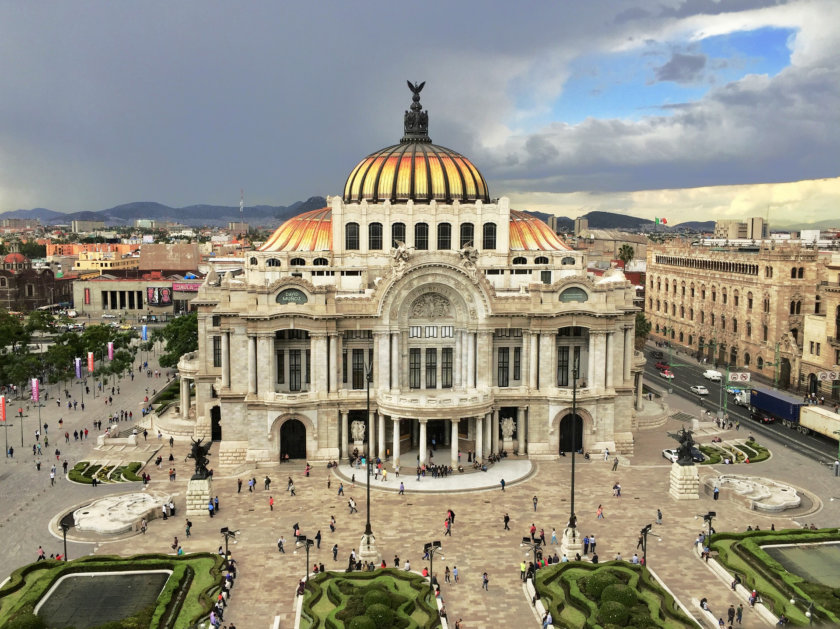
5. Academia de San Carlos
On a recent visit to the historic center of Mexico City, I discovered the Antigua Academia de San Carlos, an art school that’s been around since 1781.
It’s fascinating to discover this place is not only the first art school in the Americas but also hosted the very first art museum on the continent.
I was amazed to walk the same halls as famed Mexican artists like Diego Rivera, David Alfaro Siqueiros, Rufino Tamayo and José Clemente Orozco once did.
Discovering that the academy still conducts art classes really amazed me – those students are really lucky to study in a place with so much history!
The Antigua Academia is unique because it beautifully blends the traditional with the modern: within its classic walls are temporary exhibitions of modern and contemporary art.
- Mon-Fri 10am-6pm
- La Academia 22, Centro Histórico de la Cdad. de México
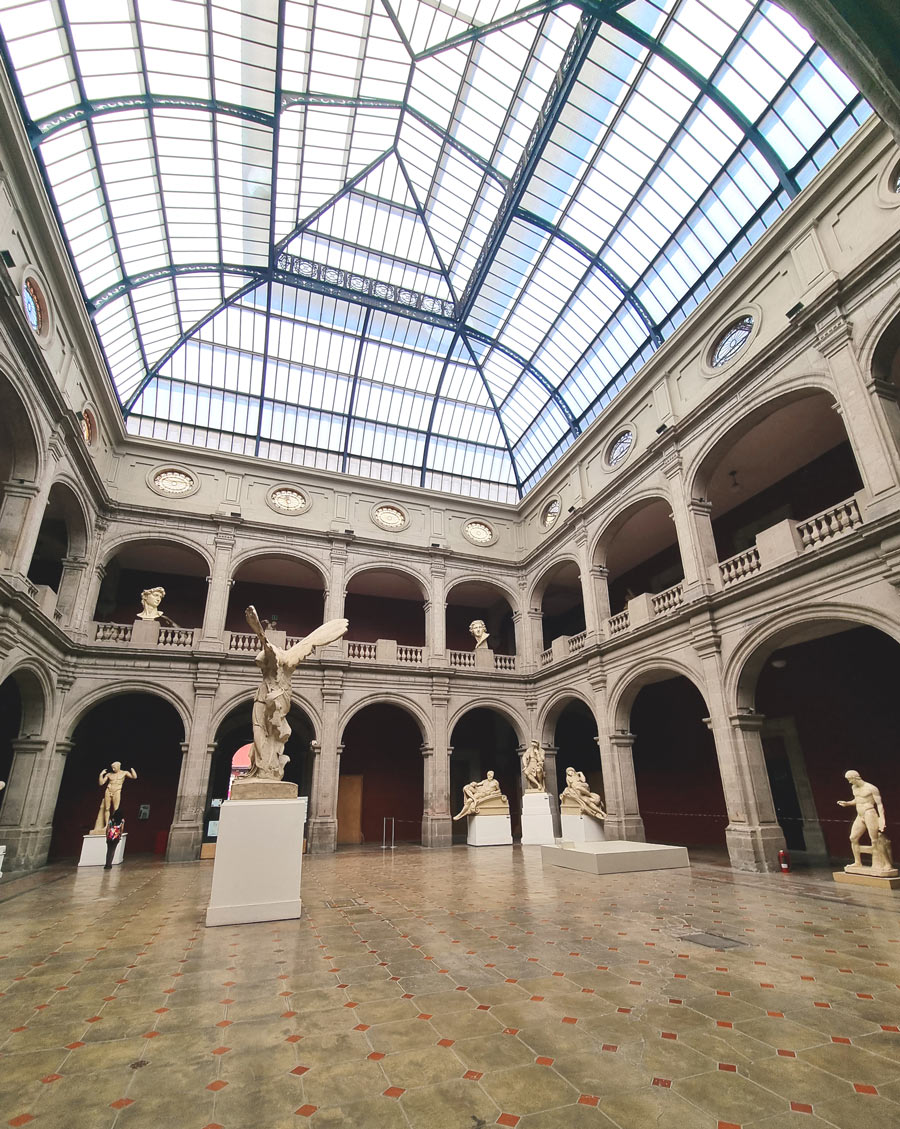
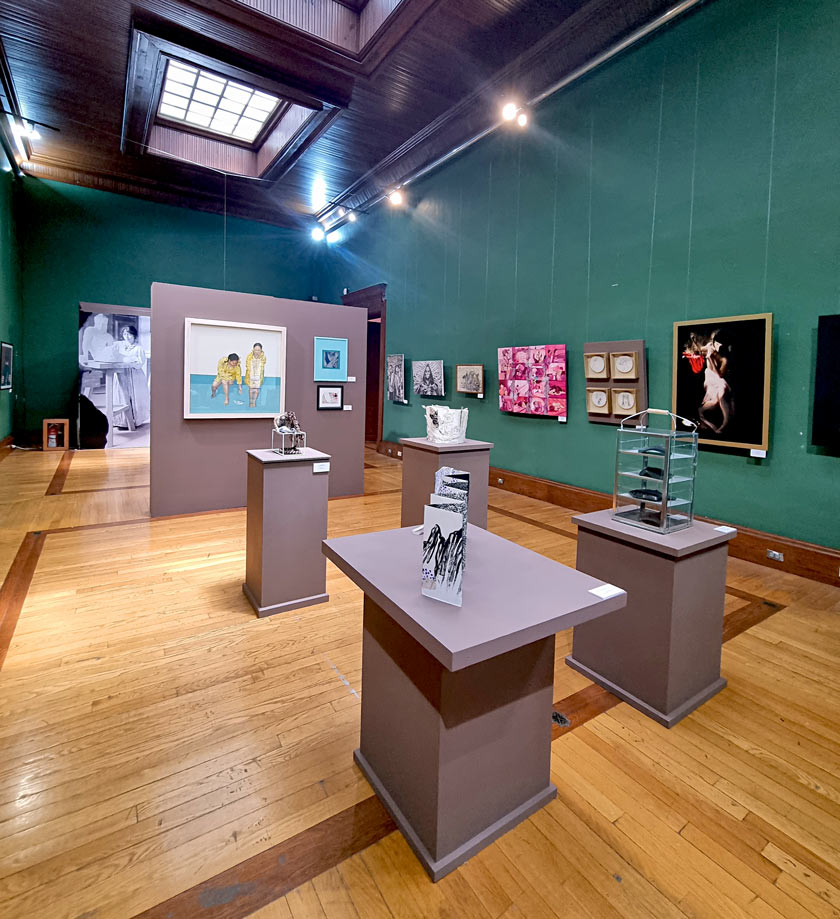
6. Enjoy free events
There are tons of free events and festivals in Mexico City throughout the year.
It’s impossible to list them all, but here are a few that I really like:
- Mexico City Festival (Festival de la Ciudad de México) – This usually takes place at the end of November and celebrates the anniversary of the city’s founding.
- International Festival of Lights Mexico (Festival Internacional de las Luces México) – It happens in November and December, showcasing light installations and artistic exhibits.
- Friends of Cultures Fair (Feria de las Culturas Amigas) – Organized in May, it celebrates cultural diversity with music, dance, food, and crafts from around the world.
- San Ángel Flower Fair (Feria de las Flores de San Ángel) – Taking place in August, it presents floral exhibits, art displays, and performances in the charming neighborhood of San Ángel.
- Spring Nights (Noches de Primavera) – Free activities across 9 different locations in the historic center, occurring the weekend before Easter. A highlight is the Gran Baile de Sonideras y Sonideros event, from 1 PM to 1 AM, celebrating the music and culture of Sonideros with public street dances typical of Mexico City.
7. Museo nacional de las culturas del Mundo
Its historic building, originally designed in the 16th century to house the Mint, later served as the headquarters of the Supreme Court of Justice of the Nation in the 19th century. Since 1965, this remarkable edifice has been the home of the National Museum of World Cultures.
Visitors can explore permanent exhibits that highlight the ancient Middle East, including Pharaonic Egypt, Persia, the Levant, and Mesopotamia; the Mediterranean featuring classical Greece and ancient Rome; and regions such as China, Korea, Japan, and Turkey.
I had a fantastic time myself, even without kids, but it’s clear that families, particularly in the Egypt section, would absolutely love it!
- Tue-Sun 10am-5pm
- Moneda 13, Centro Histórico de la Cdad. de México
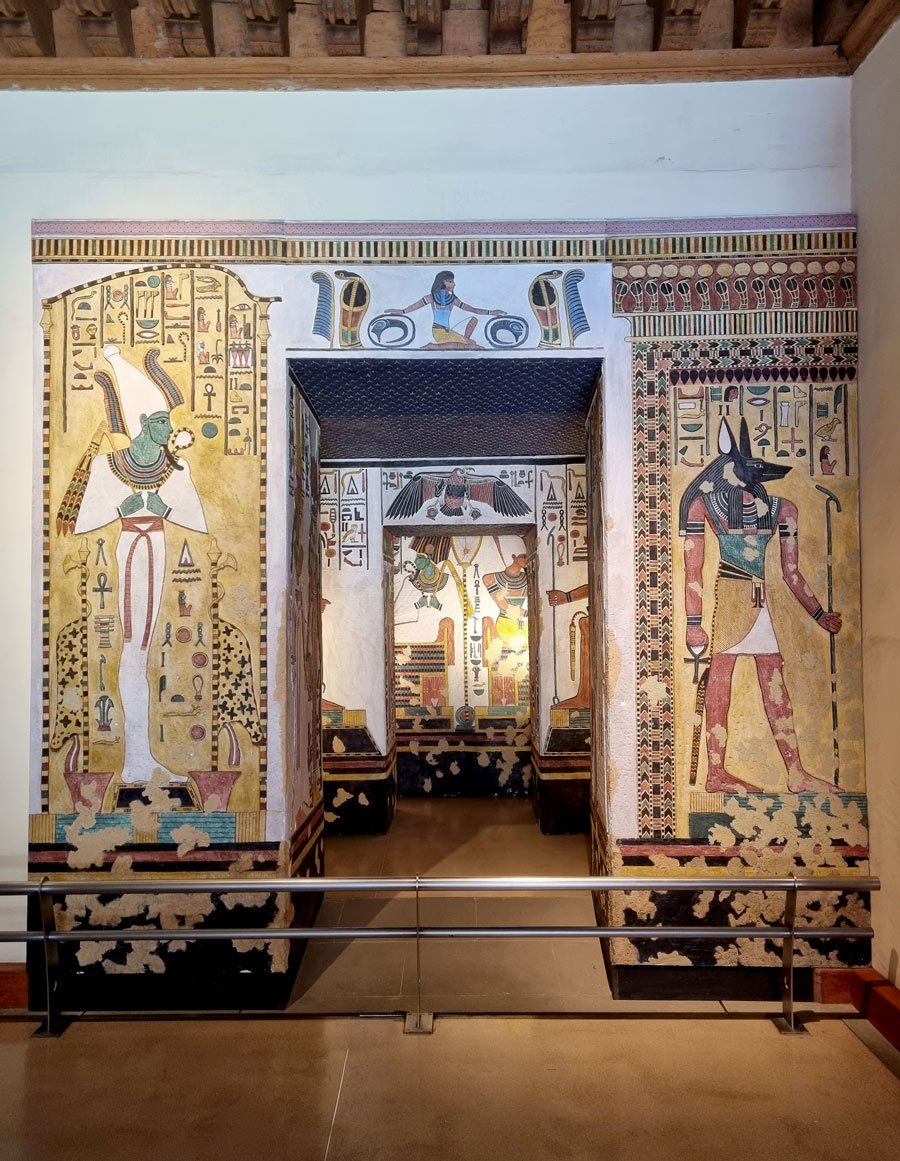

8. Museum of the Ministry of Finance and Public Credit (SHCP)
The Museo de la Secretaría de Hacienda y Crédito Público is located in the former Palacio del Arzobispado (Archbishop’s Palace).
Built in 1530 by Friar Juan de Zumárraga on the ruins of a pyramid dedicated to the Aztec deity Tezcatlipoca, it served as the archbishop’s residence until 1867, when it became the headquarters of the Ministry of Finance’s accounting department.
Today, the museum features an exhibit on Tezcatlipoca and an extensive exhibition of Mexican art (20th century and contemporary).
- Open Tuesday to Sunday from 10 am to 5 pm
- Moneda 4, Historic Center of Mexico City

9. Cultural Center of Spain
Many people walk past this beautiful 18th-century building, just steps away from the Cathedral and the Templo Mayor, without realizing it hides a real historical treasure.
Inside the Centro Cultural de España, you’ll find 88 pieces from pre-Hispanic, colonial, and modern times (sculptures, a human jaw with divine engravings, obsidian, ceramics, rifles, plates), but what surprised me the most was seeing the foundations of a school for the children of the Mexican nobility!
Indeed, archaeological excavations conducted between 2006 and 2008 uncovered a Calmecac, a pre-Hispanic structure located beneath the current Donceles street.
This was one of the 78 buildings that made up the sacred precinct of Tenochtitlan!
- Open Tuesday to Saturday from 10 am to 9 pm, Sunday from 10 am to 4 pm
- República de Guatemala 18, Historic Center of Mexico City
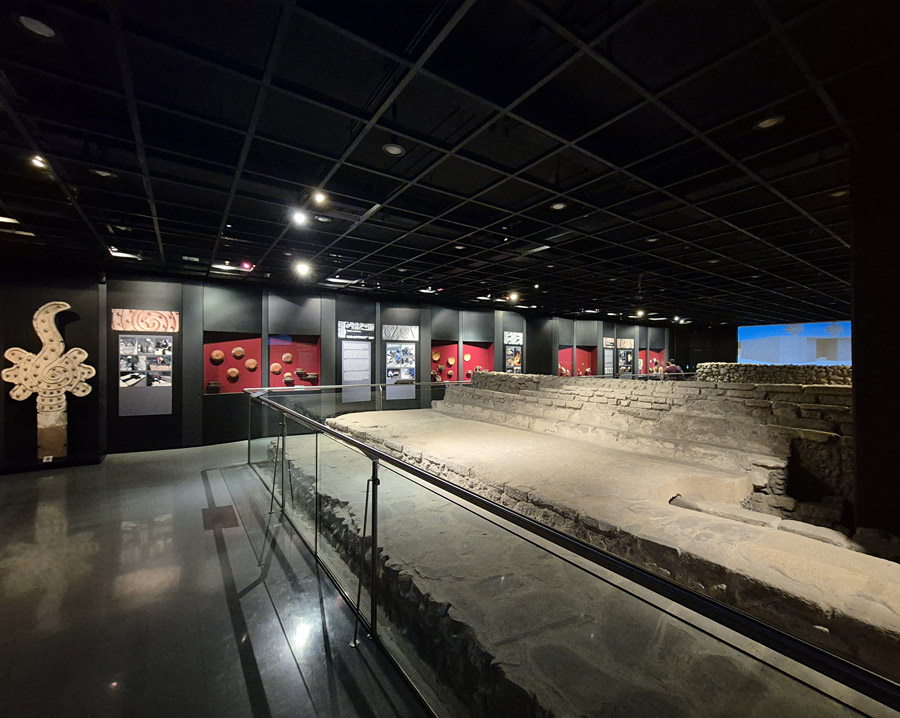
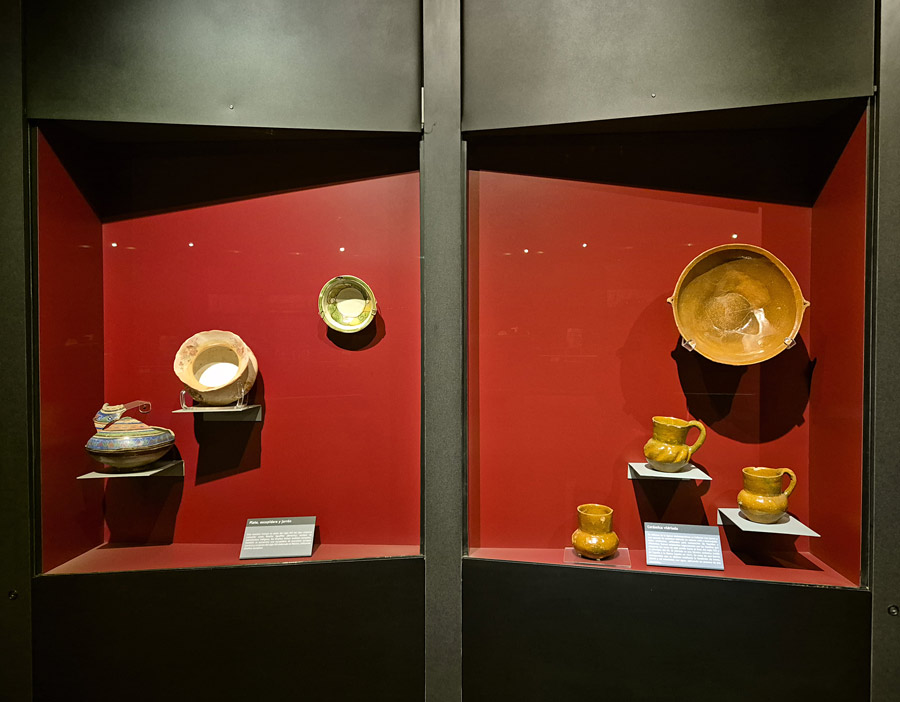
10. Museum of the Photographic Archive (MAF)
Right next to the Spanish Cultural Center is the Museo Archivo de la Fotografía, located in the 16th-century Casa de las Ajaracas, easily identifiable by its Mudéjar-influenced facade.
The museum is dedicated to the preservation and study of photography, particularly that which documents the history of the 20th century and the evolution of Mexico City, boasting a collection of more than two million images.
Here, you can see Turok’s work on the guerrillas in Central America in the 1980s and the EZLN uprising in 1994, featured in the first room.
The second room recreates the artist’s darkroom and displays personal photographs.
The last room presents images from the 1985 earthquake, the September 11 attacks in New York, and works from the south of Mexico, along with an installation in collaboration with the Lapiztola collective and visual artist Luisa Restrepo.
- Open Tuesday to Sunday, 10am to 5pm
- República de Guatemala 34, Historic Center of Mexico City
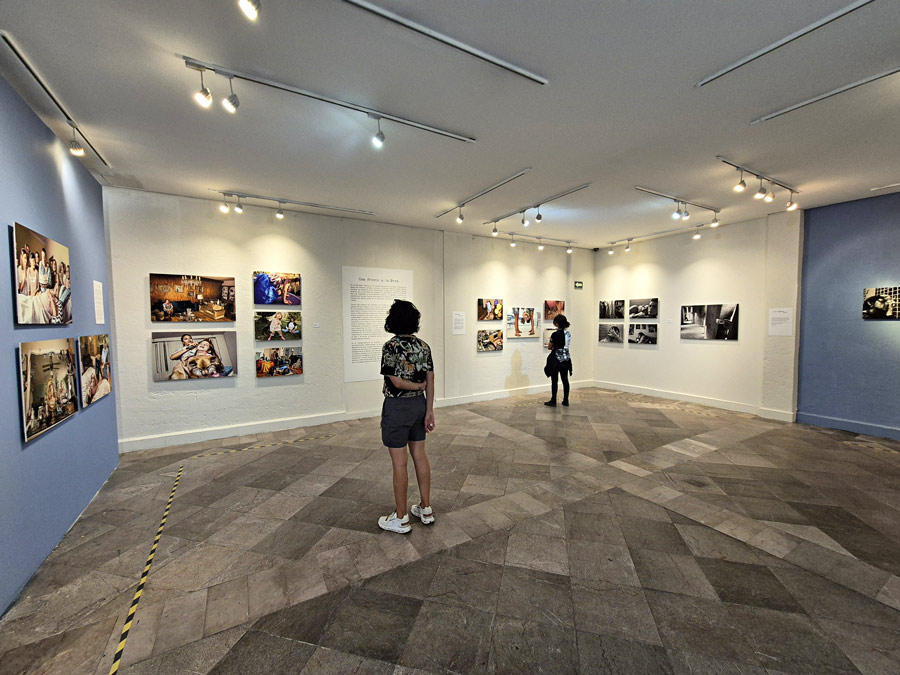

11. Mexican Army and Air Force Museum
The museum is located in a baroque building constructed in 1675.
It houses a wide variety of items (artillery pieces, firearms, bladed weapons, etc.) distributed across 10 thematic rooms: the conquest, the colony, independence, power struggles and foreign interventions, the Reform War, the Battle of April 2, 1867, the French Intervention and Second Empire, the Porfiriato, the Mexican Revolution, the aviation corps, the military industry, and military heraldry.
- Tue-Sat 10 am to 6 pm, Sun 10 am to 4 pm
- Filomeno Mata, No. 6, Historic Center of Mexico City
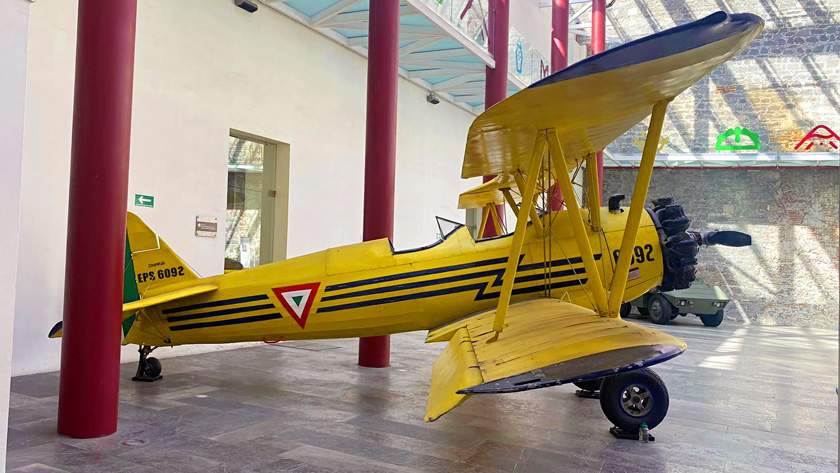
11. Secretaria de Educacion Publica
I had the chance to visit the Secretaria de Educacion while on a guided tour about Muralism in Mexico City, and I was truly amazed by the stunning murals it concealed.
From 1922 to 1929, under José Vasconcelos, Mexico’s Education saw major changes, focusing on educational reform and cultural growth, particularly in rural areas.
Vasconcelos significantly backed artists and intellectuals, effectively drawing major figures like Siqueiros, Orozco, and Rivera to Mexico City to engage and contribute to a new wave of artistic expression.
Thanks to this initiative, you can now see 120 murals by Diego Rivera in the two patios and along the corridors of the building. Beyond Rivera’s works, there are other fascinating pieces to see, like the impressive “Patricios y Patricidas” by David Alfaro Siqueiros.
While I highly recommend taking a guided tour to fully grasp the historical context and the symbols and characters in Rivera’s works, you also have the option to explore these murals on your own.
- To discover everything about Muralism in Mexico City, including details about the Secretaria, be sure to check out my comprehensive guide!
- Mon-Fri 9am-5pm, sat-sun 10am-3pm
- República de Argentina 28, Centro Histórico de la Cdad. de México
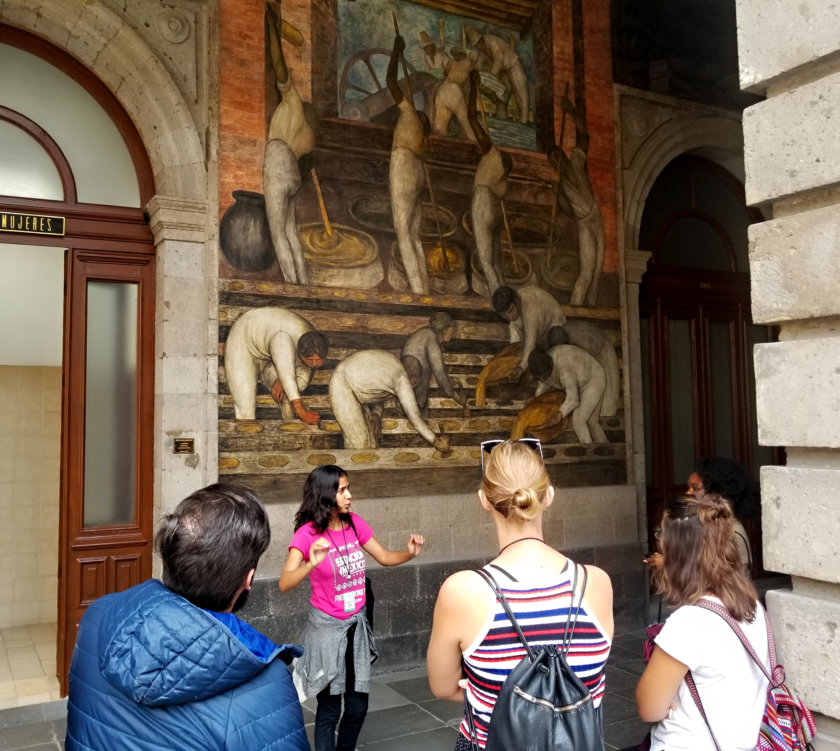

13. Palacio Nacional
As part of my Mexico City muralism tour, which included the Secretaria de Educacion Publica, I also explored the historic National Palace.
The Palacio Nacional is not only Mexico’s key political building but also a historical site dating back to the Aztec empire. This location, originally Moctezuma’s palace, now houses Diego Rivera‘s magnificent “History of Mexico” mural, created from 1929 to 1935.
This expansive fresco covers three walls and vividly depicts Mexico’s history from pre-Hispanic times to the 20th century, including invasions and the Mexican Revolution.
While it is the most famous mural, there are other incredible ones too. I was especially fascinated by the mural depicting the Tlatelolco Market. It’s filled with intricate details showing doctors, toys, spices, food, and much more.
To give you an idea, this 16th-century market was immense and highly organized, serving an estimated 20,000 to 40,000 people daily! 😮
- Since the pandemic, to visit, you first need to register at the Museo de Arte de la Secretaría de Hacienda y Crédito Público (Moneda 4, Centro Histórico de la Ciudad de México), open from 10 am
- To visit, you must present a valid official ID
- There are free guided tours available in English at 10:30 am and 3:30 pm, and in Spanish at 11 am, 11:30 am, 12 pm, 12:30 pm, 1 pm, 3 pm, and 4 pm.
- Keep in mind that sometimes it unexpectedly closes to the public for work reasons, like meetings – this has happened to me twice
- Tue-Sun 10am-4pm
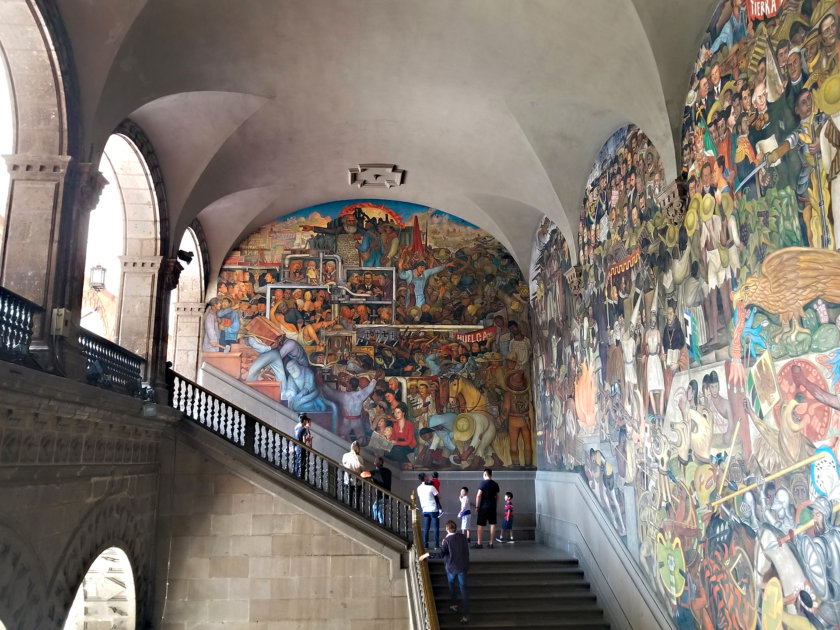

14. Postal Palace
The Palacio Postal, also known as La Quinta Casa de Correos, is an architectural treasure in the heart of Mexico City.
Built between 1902 and 1907, this historic masterpiece was designed by Italian architect Adamo Boari, who also contributed to the Palacio de Bellas Artes.
It now houses a postal museum that offers a glimpse into Mexico’s postal history, and the fact that it continues to function as a postal office today adds to its allure and historical significance!
Inside, marvel at the magnificent Mexican marble staircase and exquisite bronze ironwork crafted by the skilled hands of Fondería Pignone in Florence.
The seamless blend of architectural craftsmanship and artistic beauty makes Palacio Postal a must-visit free attraction in Mexico City, where you’ll be immersed in its opulent and historically rich ambiance.
- Mon-fri 8am-4pm, sat 8am-12pm
- Calle de Tacuba 1, Centro Histórico de la Cdad. de México

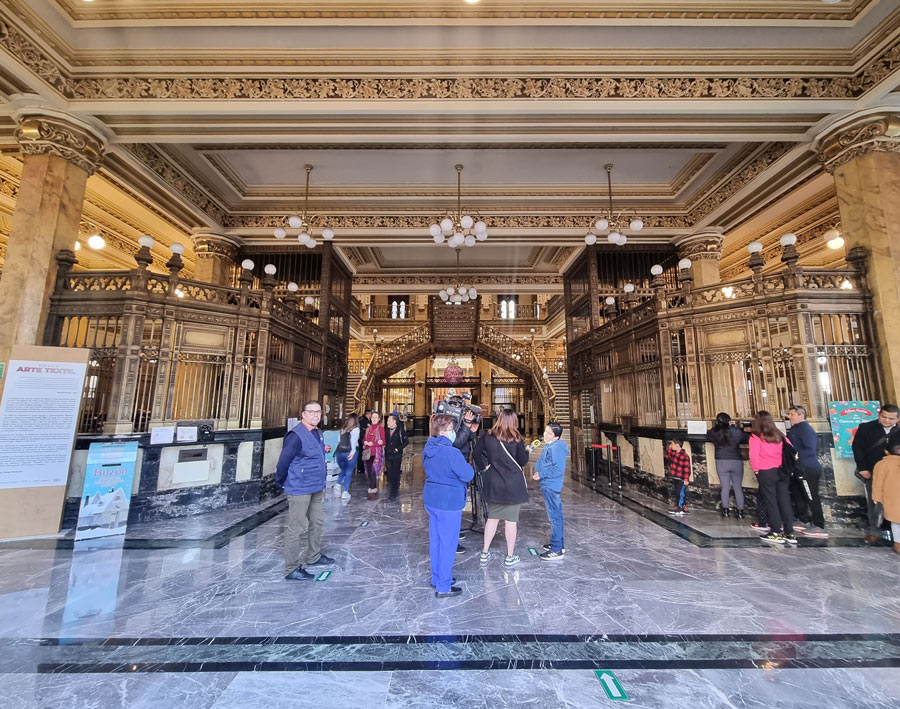
15. Museo de la Charreria
Charrería is a Mexican equestrian sport similar to rodeo.
Recognized as a national sport since the 1930s and declared intangible cultural heritage by UNESCO in 2016, it is an integral part of Mexico’s cultural identity.
The National Museum of Charrería in Mexico City showcases different historical periods, from the origins of charros and escaramuzas (female riders who perform choreography) to modern times.
With over 500 objects, the museum offers a fascinating glimpse into the various utilitarian, artisanal, and artistic aspects of Mexican Charrería.
- Open Monday to Friday from 10am to 3pm – 4pm to 6pm
- You have to ring the doorbell. Officially it opens at 10 am, but I arrived at 10:30 am and the man who does the visits was not there yet, so don’t arrive too early.
- Isabel La Católica 108, Historic Center of Mexico City
Personally, I had one of my favorite experiences at Lienzo Jalisco (open Sundays from 12pm to 3pm) during my trip to Guadalajara, although there are several in Mexico City as well.
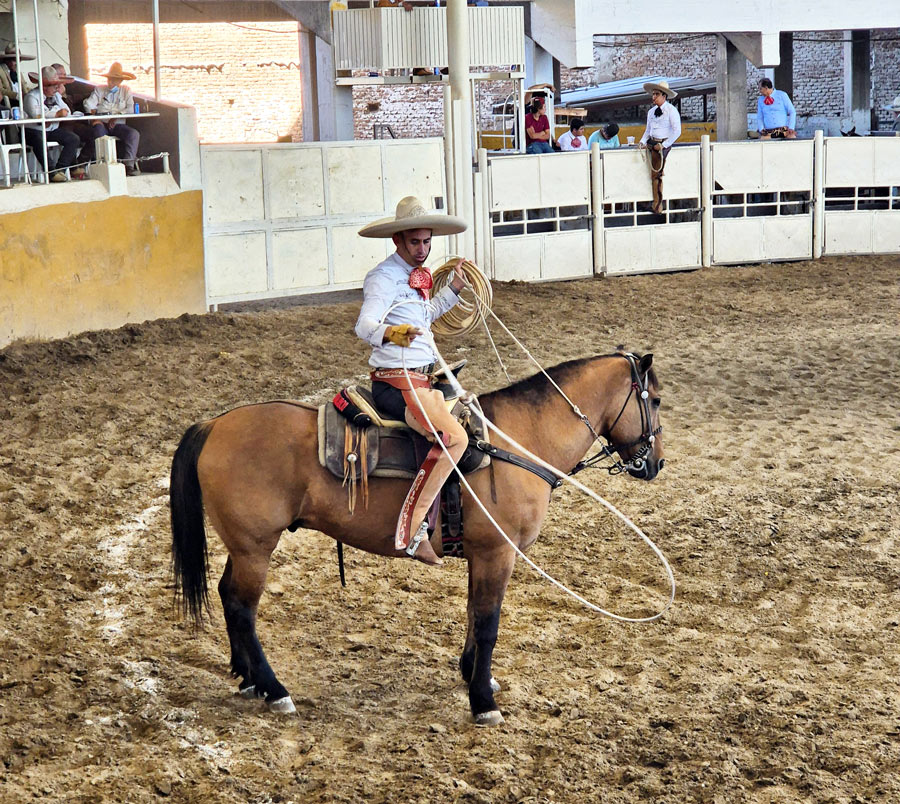
16. Museo de la Cancillería
Museo de la Cancilleria (Chancellery Museum) is part of a cultural and academic center focused on diplomacy and international relations in Mexico.
Housed in an 18th-century building, this museum has a rich history that includes serving as an orphanage, stables, warehouse, private residence, and even a mechanical workshop
While it may be relatively small in size, however, it offers visitors a glimpse of historical charm with its fountain, stone arches, and three temporary exhibition halls.
While it might not be a standalone destination, its location right next to the Miguel Lerdo de Tejada Library makes it an unmissable combination for those exploring the area.
- Mon-Sat 11am-5pm
- República de El Salvador 47, Mexico City
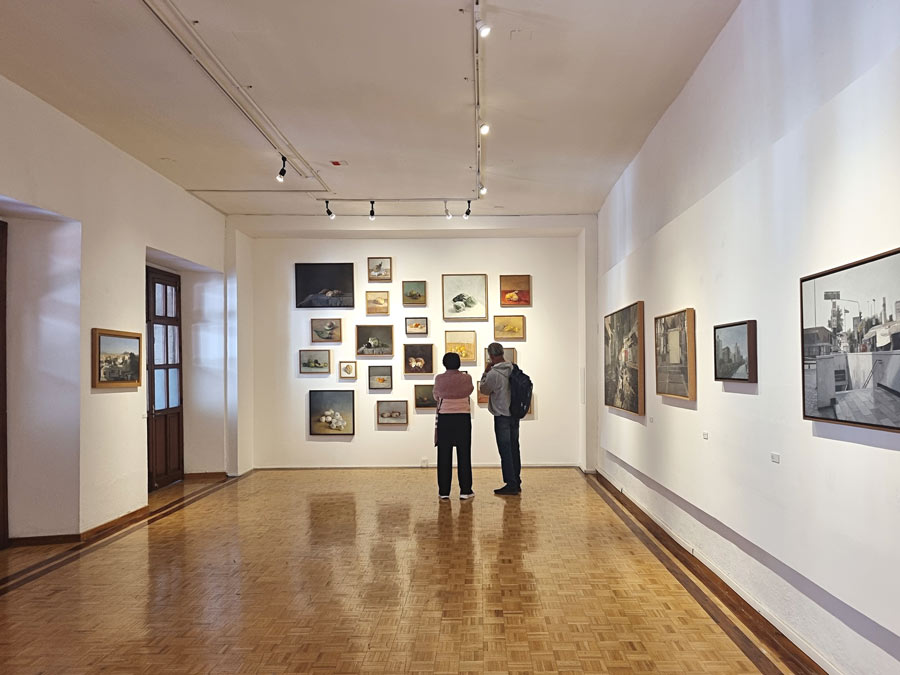
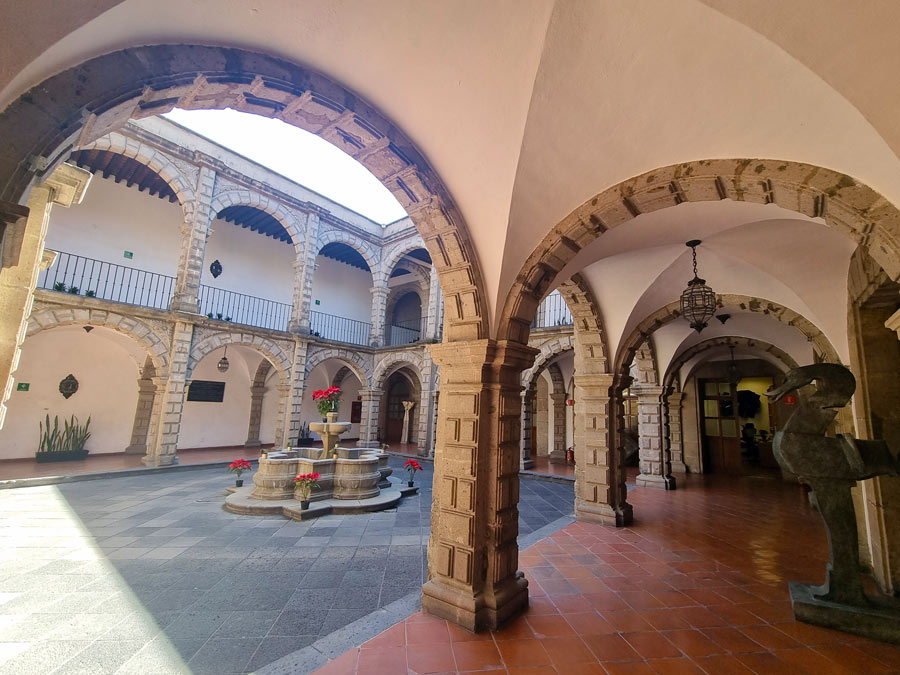
17. Biblioteca Miguel Lerdo de Tejada
Nestled within an 18th-century church adorned with a beautiful Baroque facade, the Miguel Lerdo de Tejada Library stands as one of the most enchanting libraries I’ve explored.
I find amusing is that this gem is relatively undiscovered by tourists (and even locals), yet for me, it ranks among the finest free attractions in Mexico City!
What truly sets it apart are the captivating murals that grace its interior, spanning an impressive 21528 square ft
These remarkable frescoes were crafted by the lesser-known muralist Vladímir Víktorovich Kibálchich Rusakov, also known as Vlady. His decade-long dedication from 1972 to 1982 gave life to this extraordinary artwork.
The murals depict scenes from political and musical revolutions around the world, making a visit to this library an unparalleled artistic and historical experience.
Besides the stunning murals, there’s also a changing exhibition. During my visit, the exhibition focused on Pancho Villa and the Revolution.
- Mon-fri 9 am-5.30pm, sat 10am-2pm
- República de El Salvador 49, Centro Histórico de la Cdad. de México

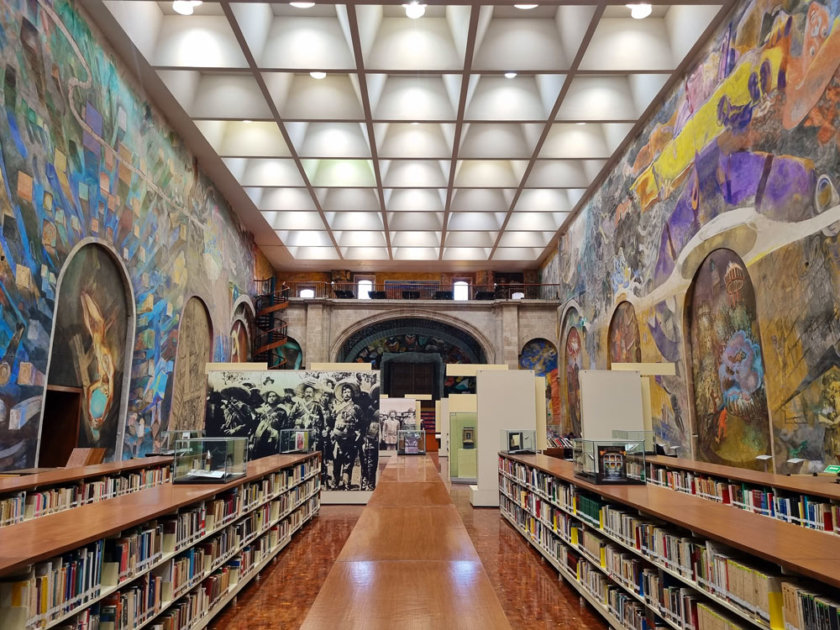
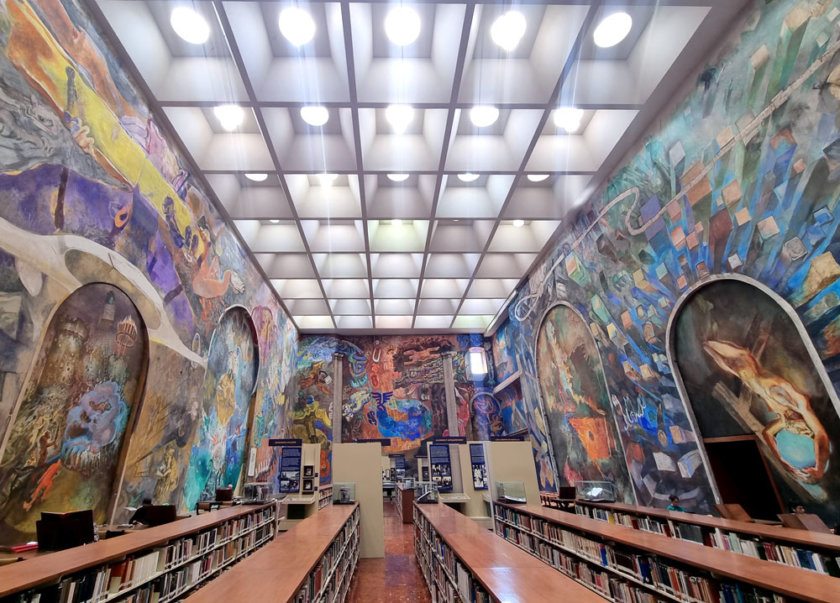
18. Centro de la Imagen
I stumbled upon the Centro de la Imagen after visiting Mercado La Ciudadela, my go-to place for finding souvenirs. I was genuinely impressed by the center, not just because it’s free to enter but also due to its substantial size!
It is a dynamic hub for photography and visual arts. It hosts exhibitions, workshops, and events that celebrate the power of images.
- Wednesday to Sunday, 11 am – 6pm
- Plaza de la Ciudadela 2, Centro Histórico de la Ciudad de México


19. Museum of Medicine
This palace is a gem of Mexican baroque that has had multiple purposes throughout its history. It served as the headquarters of the Holy Inquisition in the 18th century, was the site of the National School of Medicine for more than a century from the mid-19th century, and currently houses the Museum of Mexican Medicine.
The museum offers a journey through the history and evolution of medicine with 19 thematic rooms spread over two floors, ranging from pre-Hispanic medicine to modern reconstructive surgery.
It’s a true journey through time! Personally, I particularly enjoy the reproduction of the apothecary shop founded by Manuel Esesarte in Oaxaca in 1885, with its bottles and tools.
- Open daily from 9 am to 6 pm
- República de Brasil 33, Historic Center of Mexico

20. Telegraph Museum
I arrived at the Telegraph Museum while visiting the National Art Museum (MUNAL), with which it shares the same magnificent building dating from the early 1900s.
It was at the end of my visit that I realized they were two different museums!
The museum traces the evolution of telecommunications in Mexico, through a vast collection of historical objects, including the first telegraphs, ancient documents, and the reconstruction of a period telegraph office.
What impressed me the most was its interior: pink columns with brass details and a painted ceiling that represent telecommunications, featuring baroque and rococo elements.
Moreover, imagine that hundreds of telegraphs were sent here every day, and that there were imposing and luxurious wood and marble counters. A fascinating world that no longer exists.
- Open Tuesday to Sunday, 10 a.m. to 5:30 p.m.
- Calle. de Tacuba 8, Historic Center of Mexico City

21. Palacio de la Autonomía
Over time, this large building has served multiple purposes: a convent, residence, military barracks, schools, and administrative offices.
Today, it houses a free museum that features a room on Mexican dentistry, as well as a temporary exhibition hall and an archaeological exhibit. Visitors can also see the remnants of the old Carmelite convent.
- Open daily from 10 am to 6 pm
- Lic. Primo de Verdad 2, Historic Center of Mexico City
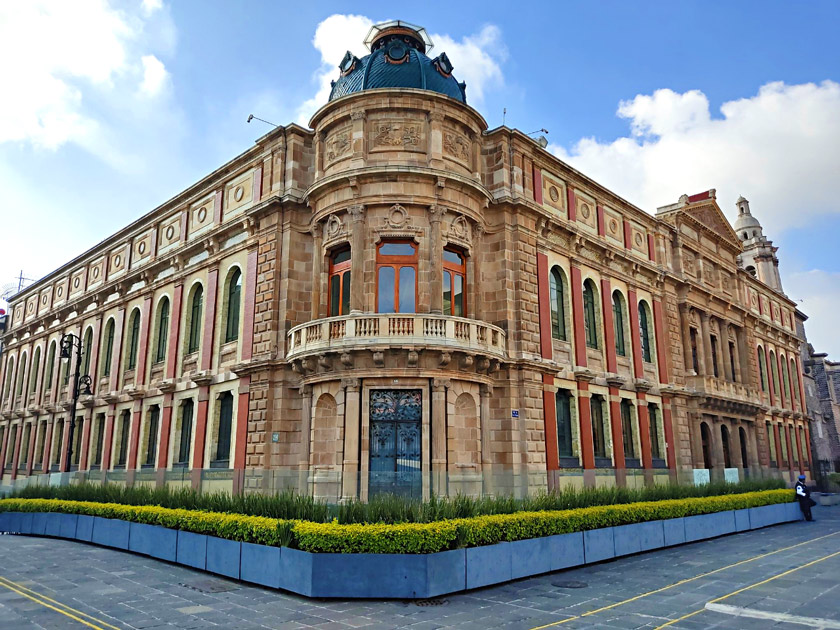
22. Museo Banco de Mexico
The Art Deco style of the Museo Banco de México has a certain charm that gives the impression of stepping into a Gotham City building, with Batman watching in the distance.
It houses an exhibition about the history and creation of money in Mexico. On the second floor, you’ll find a variety of temporary exhibits and a store. In the basement, you can explore the bank’s vault, behind a thick metal door for an immersive multimedia show.
And don’t miss the colorful digital stained glass!
In 1935, Fermin Revueltas was commissioned by Banco de México to create a prominent stained glass piece for the central staircase of their main building.
This artwork focuses on modernity and technological progress, depicting workers, farmers, and miners against a backdrop of cables, chimney smoke, and machinery – a vivid portrayal of 1930s Mexico.
Now, enhanced by interactive technology that brings the artwork to life, this dynamic piece can be experienced in a whole new way at the Museo Banco de México.
It’s easy and only takes a minute, but they won’t let you in without showing your ticket. Forgot your ticket? No problem, you can even do it on the doorstep as they are allocated in 15-minute intervals.
- Tue-Sun 11am-5pm
- Av. 5 de Mayo 2, Centro Histórico de la Cdad. de México
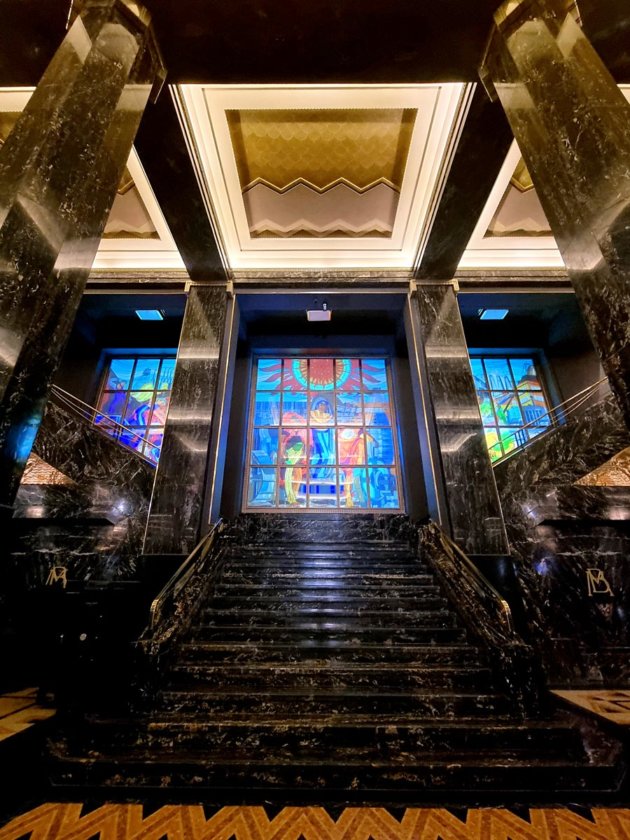
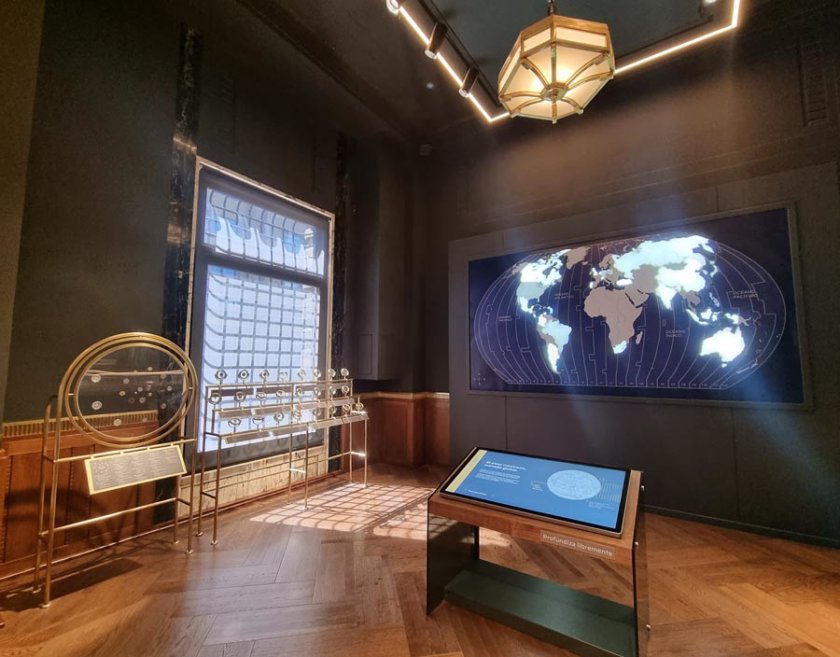

23. Ex Teresa Arte Actual
Ex Teresa Arte Actual, located in the former convent of Santa Teresa la Antigua (1616), is one of the places that fascinate me the most in Mexico City!
The space represents an unlikely contrast between two worlds: the ancient solemnity of the convent with its baroque facade and neoclassical interior, and the vitality of experimental contemporary art.
- Open from Tuesday to Sunday from 10 a.m. to 6 p.m.
- Lic. Verdad 8, Historic Center of Mexico City.
24. Foro Valparaiso
Foro Valparaiso is an 18th-century architectural gem adorned in Baroque style with its tezontle-covered façade.
It previously served as the residence of the Condes de San Mateo de Valparaíso and also functioned as the headquarters of the National Bank of Mexico.
You can explore fourteen galleries showcasing an impressive collection of 117 artworks from renowned Mexican artists like Diego Rivera, Frida Kahlo, Leonora Carrington, Remedios Varo, María Izquierdo, and more.
I had no idea what to expect, and I was truly impressed by the collection. Plus, there are some really friendly young guides who are more than happy to discuss the artworks!
- Wed-Sun 10am-6pm
- C. de Venustiano Carranza 60, Centro Histórico de la Cdad. de México


25. National Numismatic Museum of Mexico
The Museo Numismático Nacional, located in an impressive 17th-century building, has played a key role in the country’s economic history.
Built in 1842, this site served as the mint from 1848 to 1992. It was the financial center of the Spanish empire, kind of like the Wall Street of its time. Its main job was to oversee the minting of precious metals, a monopoly strictly controlled first by the Spanish crown and then by independent Mexico.
Visitors can see a collection of coins and medals from different times, as well as the machines and various tools used.
The museum has three themed rooms: one is dedicated to the history of coins, another to a historical collection of Mexican banknotes from the Bank of Mexico, and a third to the evolution of the national coat of arms.
It truly feels like a timeless space, contrasting with the chaos of the surrounding streets!
- Open from Tuesday to Sunday from 10 a.m. to 3 p.m.
- C. República de Bolivia 40, Historic Center of Mexico City.
26. Museo de los Cabildos
The Cabildos Museum is located in the former Palacio de Ayuntamiento (City Hall), where important socio-political decisions were made for over 400 years.
Long closed to the public, it is now a museum that offers a glimpse into one of the most beautiful and oldest palaces in the capital!
The building features stunning details: columns adorned with plant motifs and seashells, cherubs, masks, and marble busts at the windows, and wrought iron balconies.
During your visit, you can see the main patio, the stairs, the rooms, paintings, and photographs.
From the balconies, you get an impressive view of the Plaza de la Constitución (Zocalo) with the cathedral in the background
- Open Tuesday to Sunday from 11 am to 5 pm
- Zocalo (Corner of 5 de febrero and 16 de septiembre), Historic Center of Mexico City
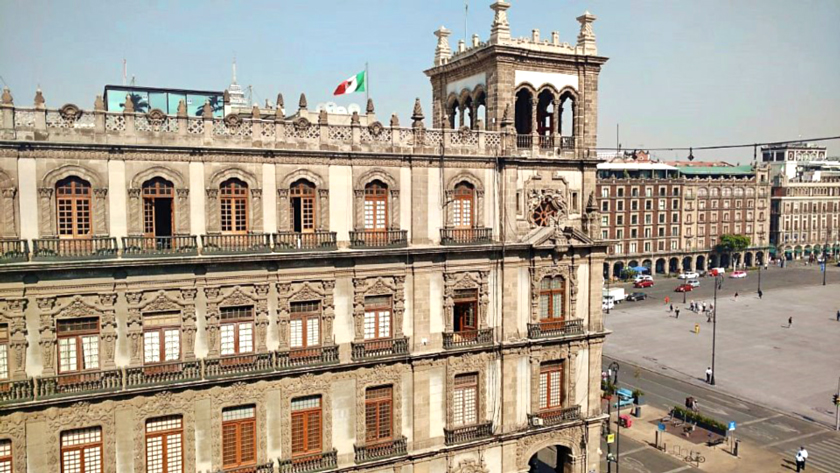
Roma Norte
27. Salón de la Plástica Mexicana
Since its establishment in 1949, the Salón de la Plástica Mexicana has showcased the most representative works of Mexican visual arts.
Over its history, it has featured hundreds of artists from various disciplines including painters, sculptors, printmakers, ceramists, and photographers, representing a diverse range of styles and generations.

28. Casa Universitaria del Libro UNAM
Purchased in 1914 by Joaquín Baranda Mac Gregor and Dolores Luján Zuloaga and completed in 1925, this three-story house features an eclectic style with a golden stone facade and a cast iron gate. It’s certainly one of the most beautiful houses in Colonia Roma!
Given to UNAM in 1986, the University Book House serves as a center dedicated to print culture. It offers a variety of courses and workshops, along with many free activities: book presentations, music concerts, film screenings, and exhibitions.
You can follow the Facebook Page to find out about upcoming activities and have the opportunity to explore the place for free.
- Orizaba 24, Roma Norte, Mexico City
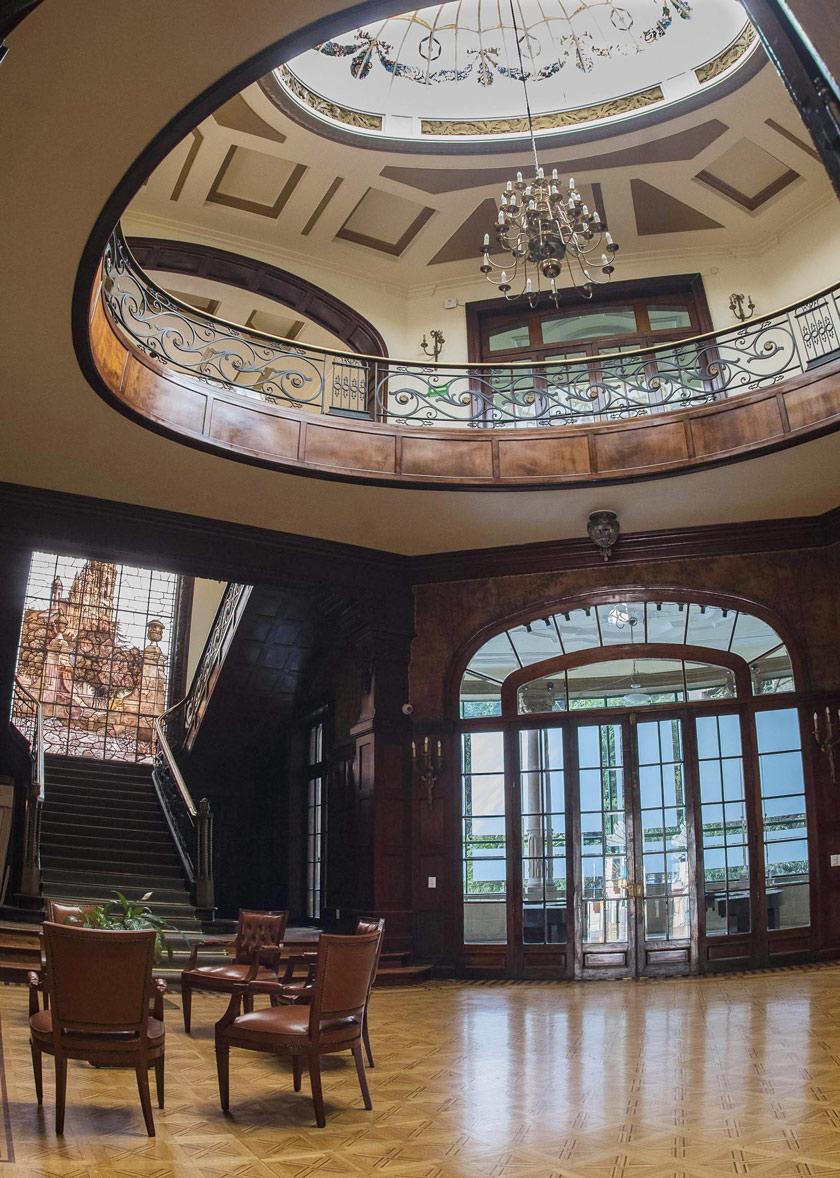
29. Guillermo Tovar de Teresa Museum
The Guillermo Tovar de Teresa House is one of the best free activities to do in Roma Norte.
It’s a typical residence from the Porfirian era (early 1900s) that belonged to Guillermo Tovar de Teresa, a renowned historian and collector, specializing in painting, literature, and rare books.
The tour reveals the entrance hall with a Venetian mirror from 1817, the reception room, the red room, the blue room, the dining room, the checkered hallway, the bedroom, the library, the Victorian garden, and the courtyard, adorned with tapestries, period furniture, dishes, etc.
The house has been declared a part of Mexico’s artistic heritage!
- Open daily from 10:30 a.m. to 6:30 p.m.
- Valladolid 52, Roma Norte, Ville de Mexico
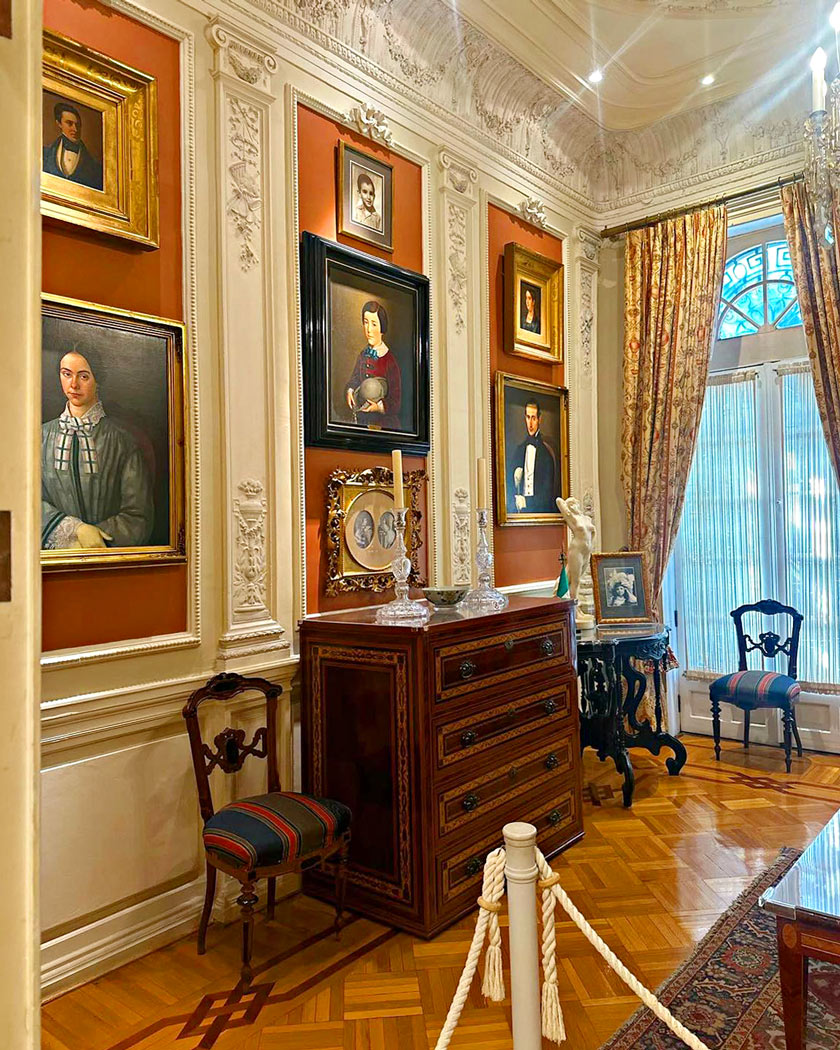
30. Centro cultural Casa LAMM
Casa Lamm, a cultural gem located in the heart of Mexico City’s Roma neighborhood, is a delightful blend of history and art.
Completed in 1911 by architect Lewis Lamm, was initially intended as a residence but never served as one.
Today, it stands in Mexico City’s Roma neighborhood as a cultural hub with free-access art galleries, a bookstore, and an elegant restaurant.
The building, a historical architectural marvel, now hosts a vibrant mix of cultural activities and is a popular spot for both locals and tourists.
- Monday – Saturday 10 am-7 pm, sunday 10 am – 6pm
- Av. Álvaro Obregón 99, Roma Norte, Mexico City

Bosque Chapultepec
The Bosque de Chapultepec is twice as large as New York’s Central Park and ranks among the top 10 largest urban parks in the world.
It is home to renowned museums like the Anthropology Museum and Chapultepec Castle, but did you know it also offers many free attractions?
31. Anfibium
The Axolotl Museum and Amphibian Conservation Center is a new free museum in Mexico City that opened its doors in 2023, in the Chapultepec Zoo.
It houses five of the 17 axolotl species found in Mexico, in an artificial wetland.
Additionally, the museum is home to 30 species of amphibians, including frogs, turtles, salamanders, cambarellus, toads, and more.
This little creature has become a symbol of Mexico, even appearing on the 50-peso bill.
- open Tuesday to Sunday, 10 a.m. to 3:30 p.m.
- Calz. Chivatito s/n, (entrance through Chapultepec Zoo), Bosque de Chapultepec 1a. Sección, Mexico City

32. The Botanical Garden
Despite my many walks around the area, I had never noticed that the Bosque de Chapultepec housed a botanical garden.
I stumbled upon it by chance, and it turned out to be a real oasis of peace, just steps away from the busy traffic of the grand Avenida Reforma.
It covers 5.3 hectares and features 300 types of plants, organized into various categories such as pollinators, edible plants, wetland areas, as well as 14 species of wild dahlias, agaves, cacti, and an arboretum, not to mention its magnificent orchidarium.
Some names really made me laugh, like a cute round cactus (photo below) called “asiento de suegra” or mother-in-law’s cushion.😆
- Free guided tours Friday, Saturday and Sunday at 12:30 and 1:30 pm (Spanish) and Saturday at 1:30 pm (English)
- Open Tuesday to Sunday, 9 a.m. to 4 p.m.
- Av. P.º de la Reforma 126, Bosque de Chapultepec I Secc, Mexico City
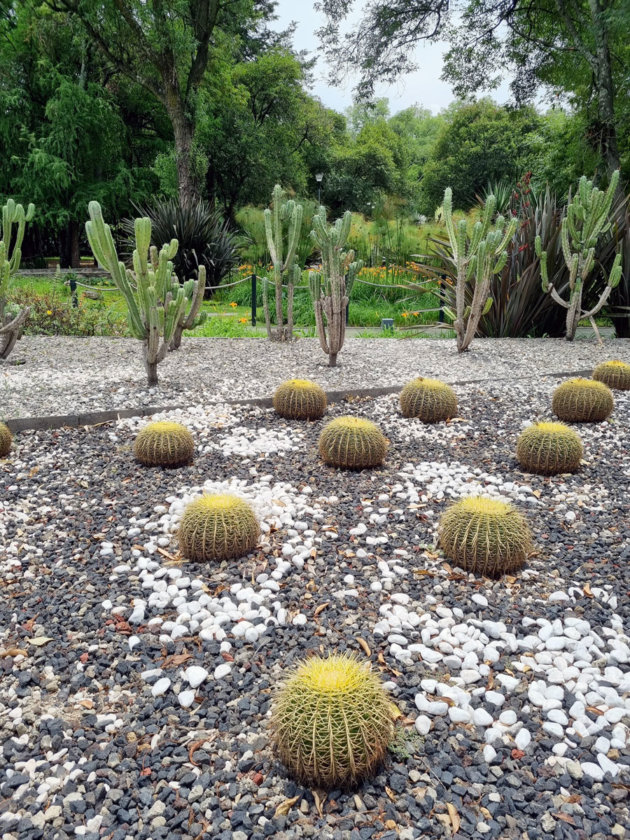


33. Chapultepec Park Museum
The Chapultepec Park Museum is located in a historic building that once served as the entrance to the old Chapultepec military academy.
It showcases the history and cultural heritage of Chapultepec (engravings, photographs, botanical illustrations, maps, various historical objects) across four stages: the pre-Hispanic era, the colonial period, the 19th century, and the 20th century.
- Gran Avenida, Miguel Hidalgo, San Miguel Chapultepec I Secc, Mexico City
- Open Tuesday to Sunday, 10 a.m. to 5 p.m.
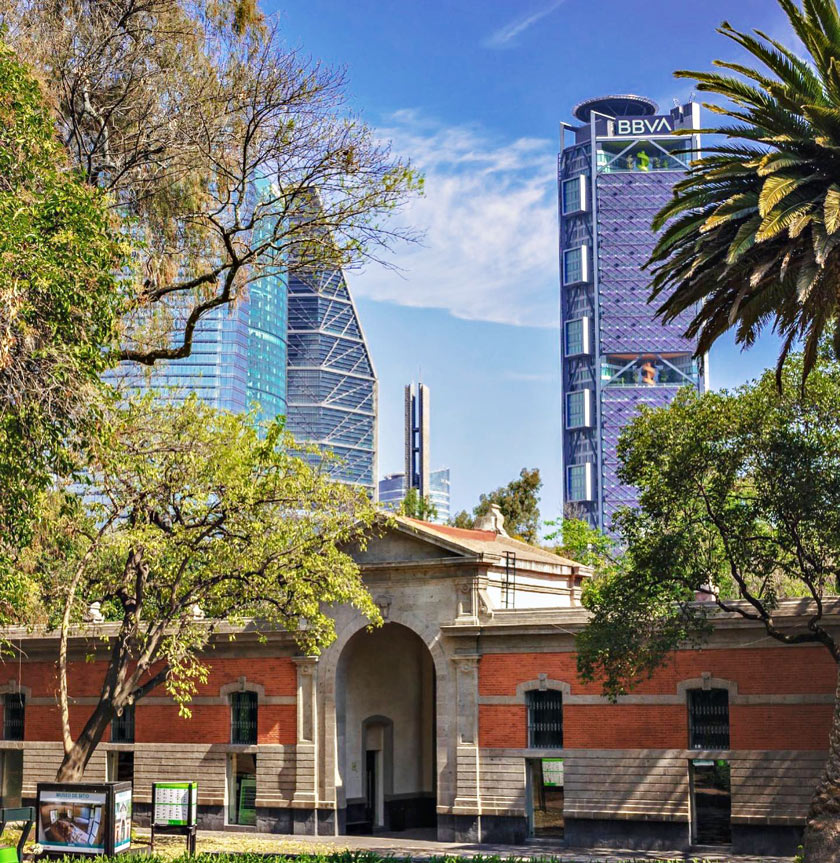
34. Center of Digital Culture
The Centro de la Cultura Digital (CCD) is a space dedicated to digital art, that promotes digital expression and its impact on the country’s cultural and artistic landscape.
Located at the main entrance of Chapultepec Park, right beneath the iconic Estela de Luz monument, it includes a gallery and a digital exhibition room with an interactive screen.
- Av. P.º de la Reforma S/N, Juárez, Mexico City
- Open Tuesday to Sunday, 11 a.m. to 6 p.m.
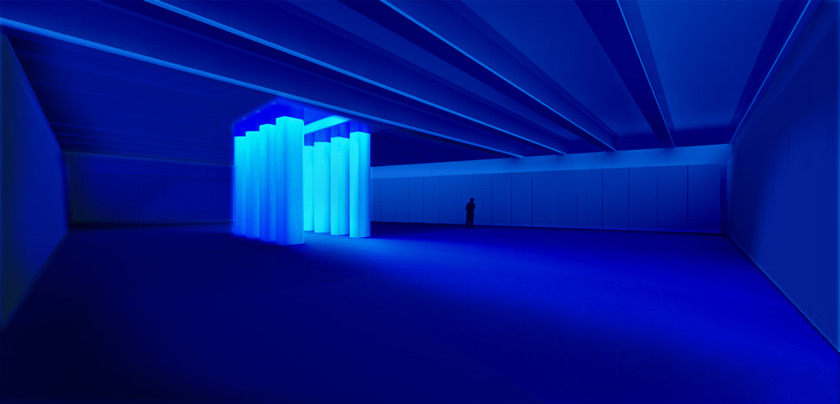
35. Cencalli
The Cencalli Museum, or “House of Corn and Food Culture,” celebrates the culinary heritage of Mexico’s 68 indigenous cultures.
Located in the Los Pinos Cultural Complex, in the 18th-century Molino del Rey building, it highlights the central role of corn in Mexican culture.
The exhibition features 8 themed rooms: the domestication and diversity of corn, Mesoamerican agricultural systems, nixtamalization, corn cooking, its symbolic value, its global significance, its future, and its presence in art.
- Open Tuesday to Sunday, 10 a.m. to 6 p.m.
- Av. Parque Lira S/N, Bosque de Chapultepec I Secc, Mexico City
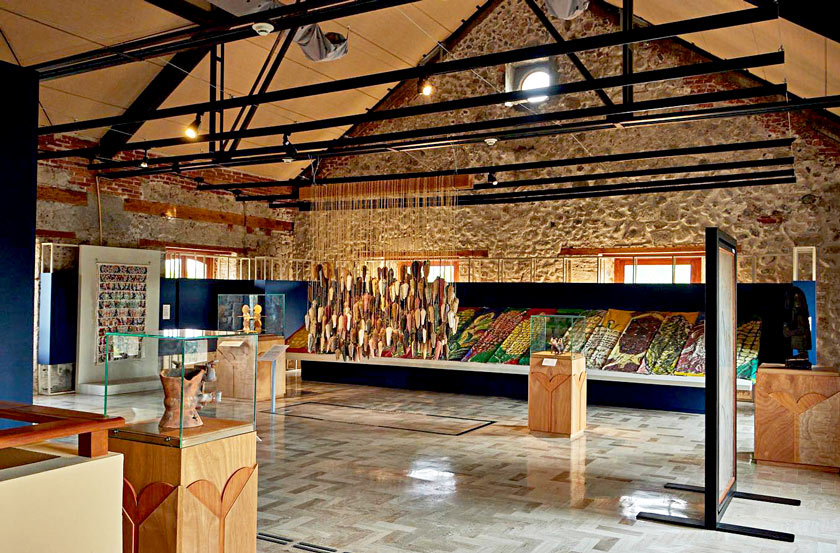
Other districts
36. Museo Soumaya (Polanco)
The Soumaya Museum is one of the main nonprofit cultural centers in Mexico City.
It is named in honor of Soumaya Domit, the wife of its founder, Carlos Slim Helú, the richest man in Mexico and all of Latin America!
Its facade, designed by Mexican architect Fernando Romero, is unique: a windowless structure covered by 16,000 aluminum hexagons that seem to form a moving mirror.
The institution houses nearly 70,000 works of art, including masterpieces from European masters from the 15th to the 18th century, the largest collection of Auguste Rodin sculptures outside of France, impressionist art, Mexican art from the 19th and 20th centuries, pre-Hispanic art, historical photographs, and much more.
It’s the best free activity in Polanco and a must-visit if you’re spending 3 or 4 days in Mexico City!
- You can explore its collection online (click here!) with over 700 pieces (Renaissance, Baroque art, Neoclassical, Impressionism, etc.).
- Open daily from 10:30 a.m. to 6:30 p.m.
- Blvd. Miguel de Cervantes Saavedra, Granada, Miguel Hidalgo, 11529 Ciudad de México, CDMX

The Vasconcelos Library is the largest library in Mexico and one of the largest in Latin America, boasting a collection of over 470,000 books across 409029 ft2!
It’s renowned for its modern architecture and unique design, featuring transparent walls, multi-level floating shelves, and a massive whale skeleton suspended from the ceiling.
It really makes you feel small!
- Eje 1 Nte. S/N, Buenavista, Cuauhtémoc, 06350 Mexico City, CDMX
- Open Monday to Sunday from 8:30 am to 7:30 pm
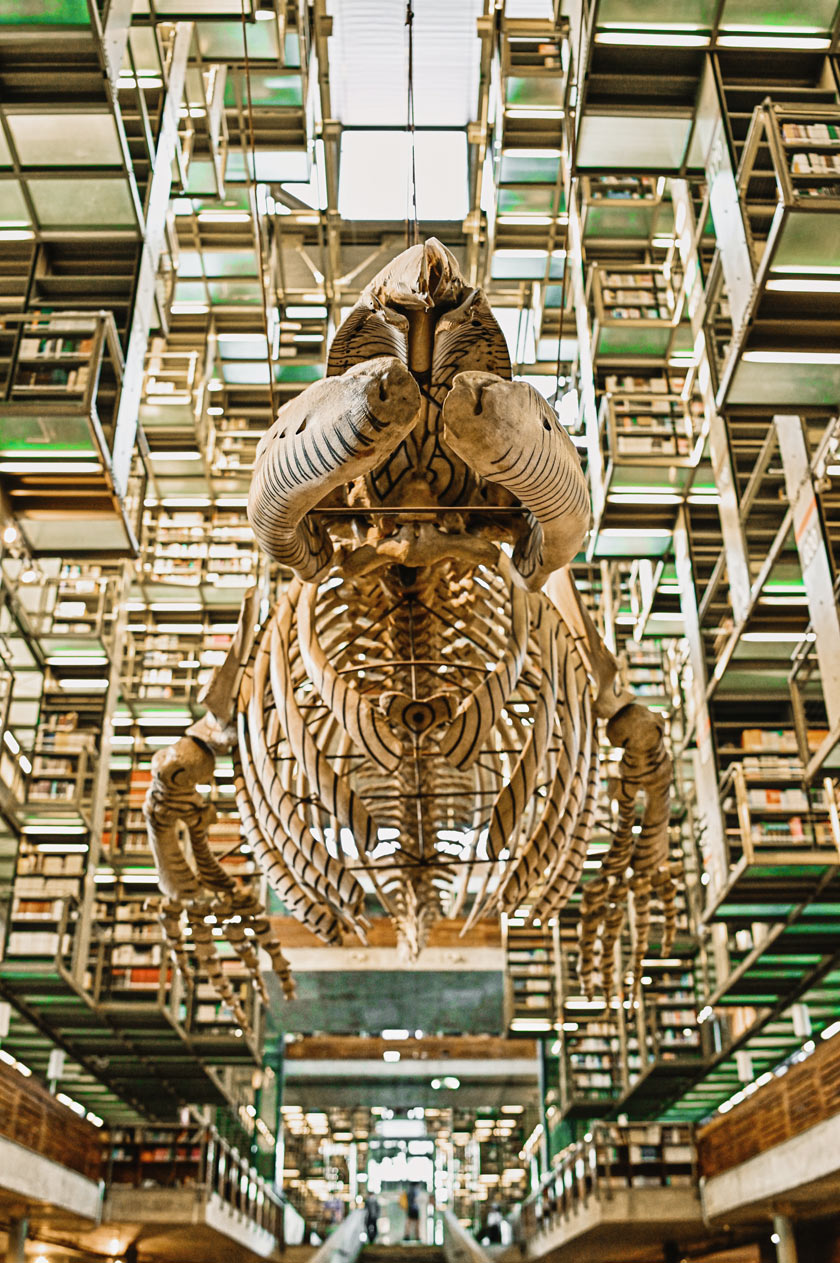

38. Sugar Art Museum (Narvarte)
With its 168 museums, Mexico City undoubtedly has some unusual museums, and the sugar art museum, hidden in a house in Colonia Narvarte, is one of them.
The collection features artistic sugar pieces created by Marithé de Alvarado, a Mexican confectioner and sculptor who dedicated 80 years to the art of sugar!
There are about a hundred pieces (figurines, decorations, etc.) spread across 5 rooms, most of which are originals, with some reproductions of models from the 50s, 60s, and 70s.
- Av. Cuauhtémoc 950, Colonia Narvarte, Mexico City
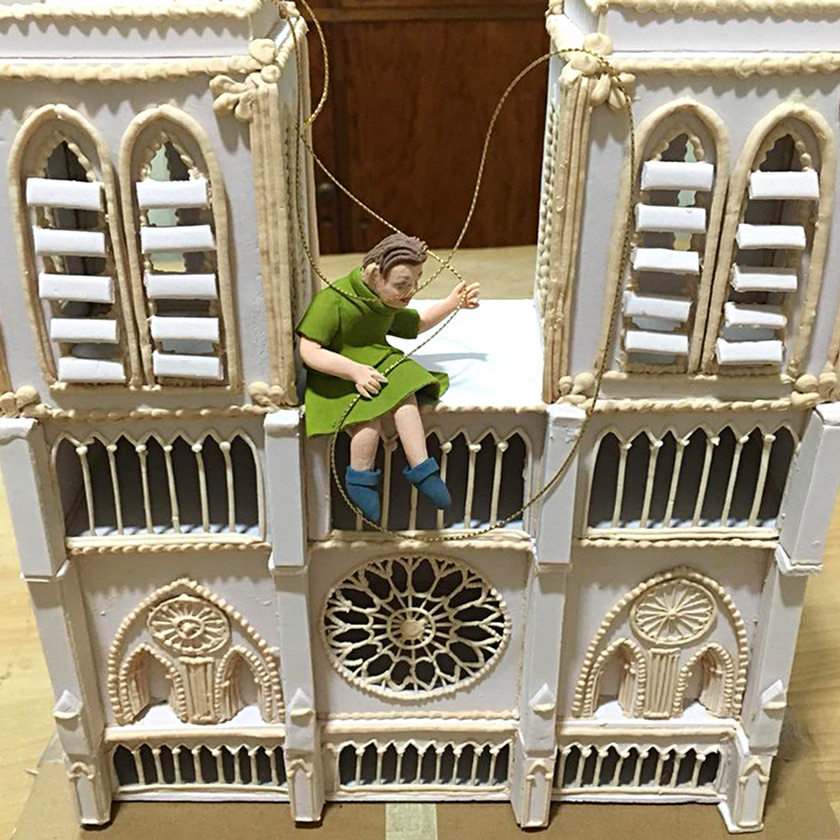
39. National Watercolor Museum
Nestled in the heart of Coyoacán, the picturesque neighborhood of Frida Kahlo and Diego Rivera, the Watercolor Museum (Museo Nacional de la Acuarela) was the first museum in the world specifically dedicated to this technique.
Founded by the Mexican artist Alfredo Guati Rojo in 1967, it showcases an impressive collection of national and international artists, highlighting the versatility and beauty of watercolor techniques.
It features six permanent exhibition rooms ranging from pre-Hispanic to contemporary art, along with a temporary exhibition room.
- Admission is free but a fee of 50 pesos is required if you wish to take photographs
- Open daily from 10am to 6pm
- C. Salvador Novo 88, Santa Catarina, Coyoacán, Mexico City

40. National Pavilion of Biodiversity
The National Pavilion of Biodiversity is an educational center that showcases the incredible biodiversity of Mexico.
Inside its modern structure, you’ll find the collections from UNAM’s Institute of Biology, featuring around 130,000 dissected specimens such as amphibians, insects, mammals, reptiles, microorganisms, and even the skeletons of a sperm whale and a blue whale. About 3,000 of these specimens are currently on display.
There’s also a temporary exhibition space with pieces on loan from the Soumaya Museum in Polanco.
Plus, there’s a café on-site with very reasonable prices, perfect for a break.
- Cto. Centro Cultural, C.U., Coyoacán, Mexico City
- Open Tuesday to Sunday, 10 a.m. to 4 p.m.

Map of Top Free Attractions in Mexico City
This map marks all the best free visits in Mexico City, so you can easily plan your adventure and make the most of your visit!
Staying in Mexico City
- Hostel Mundo Joven Catedral (historic center): one of the best hostels in Mexico City. Clean dorms and rooms, amazing rooftop terrace with bar, great atmosphere and an exceptional view over the cathedral and the Zocalo, starting at 15$usd for a dorm and 32 $usd for a private room!
- Hotel Villa Condesa (Condesa): if you are looking for a romantic hotel in Mexico City, this is a little oasis in the heart of La Condesa. It is an elegant house with small green terraces and tastefully decorated rooms. Rooms are spacious, breakfast is very good and the service is particularly attentive. Around 160$usd per night!
- Casa Goliana (Roma Norte): high-end hotel with the best value for money in its category, located in an early 20th century house, typical of the Roma area. Rooftop terrace, comfortable rooms, very attentive staff, and good breakfasts. Around 190$usd per night
- Four Seasons Hotel Mexico City (Juarez): this 5 star hotel is one of the best hotels in Mexico City, ideal for a business trip or a romantic stay. Located on Paseo de la Reforma between Colonia Juarez and Roma Norte. A large indoor garden, gym, swimming pool, spa, restaurant, and bar, Around 640$usd per night!
Get the Best Deals on Flight Tickets
Mexico City Airport officially named Benito-Juárez International Airport receives a lot of national and international flights. It is the most important airport in Latin America!
To save money on flight tickets, you can use our flight comparator for Mexico, in partnership with Skyscanner: it’s the guarantee to pay the best price for your international and domestic flights!
🚗 Rent a car
🗽 Book entrance tickets and guided visits
🏄 Book your sports activities
🌍 Take a travel insurance
🙎 Book a tour
✈️ Book your flight
You’re traveling in Mexico? These articles will help you!
Discover all my articles about Mexico: All my articles to help you plan your trip to Mexico are listed there.
- Mexico City: The 45 Best things to Discover
- 1 Day in Mexico City – How to spend just 24h in the Mexican capital
- 2 Days in Mexico City – The perfect itinerary for 48h!
- 3 Days in Mexico City – The Best Itinerary + Where to Stay
- 4 Days in Mexico City – Your Four-Day Must-See Guide
- Where to stay in Mexico City? – Best areas and hotels for all budgets!
- Mexico City on a Budget: Guide + All my Best Tips to Save Money
- Coyoacán (Mexico City): the Best Things to Do in Frida Kahlo’s Neighborhood
- Frida Kahlo Museum (Casa Azul): Info, Tickets and Opening Hours
- Teotihuacan (Mexico City): The Definitive Guide + Tips
- How to Visit Xochimilco (Mexico City): The Ultimate Guide
- 40+ Wifi Cafes in Mexico City that Every Digital Nomad Should Know About
- Itinerary: 8-10 days in Mexico – From Mexico City to Oaxaca
- Itinerary: 10 days in Mexico – Mexico City, Chiapas and Yucatan
- Itinerary: 2 weeks in Mexico – Best itinerary to discover the Yucatan Peninsula and Chiapas!
- Itinerary: 3 weeks in Mexico – Mexico City, Puebla, Oaxaca, Chiapas, Campeche, Yucatán and Riviera Maya
- Itinerary: 1 month in Mexico – My Epic 30-31 Days Itinerary from Mexico City to Cancun
- Road trip in Mexico: The best itineraries for 10, 15, 21 days and a month
- Itinerary: 1 week in Yucatan – The Ultimate 6, 7 or 8 days Itinerary
- Itinerary: 10 days in Yucatan – Best Itinerary for 9, 10 or 11 Days in Yucatan
- Itinerary: 2 weeks in Yucatan – Epic Itinerary + All my Best Tips!
- Itinerary: 3 weeks in Yucatan – Best things to do in 20-21 days
- Itinerary: 1 month in Yucatan – Yucatan Peninsula in 29, 30 or 31 days from Cancun
- Road trip in Yucatan: The best itineraries for 7, 10, 15, 21 days and 1 month
You’re using Pinterest? Here is the picture to pin!







